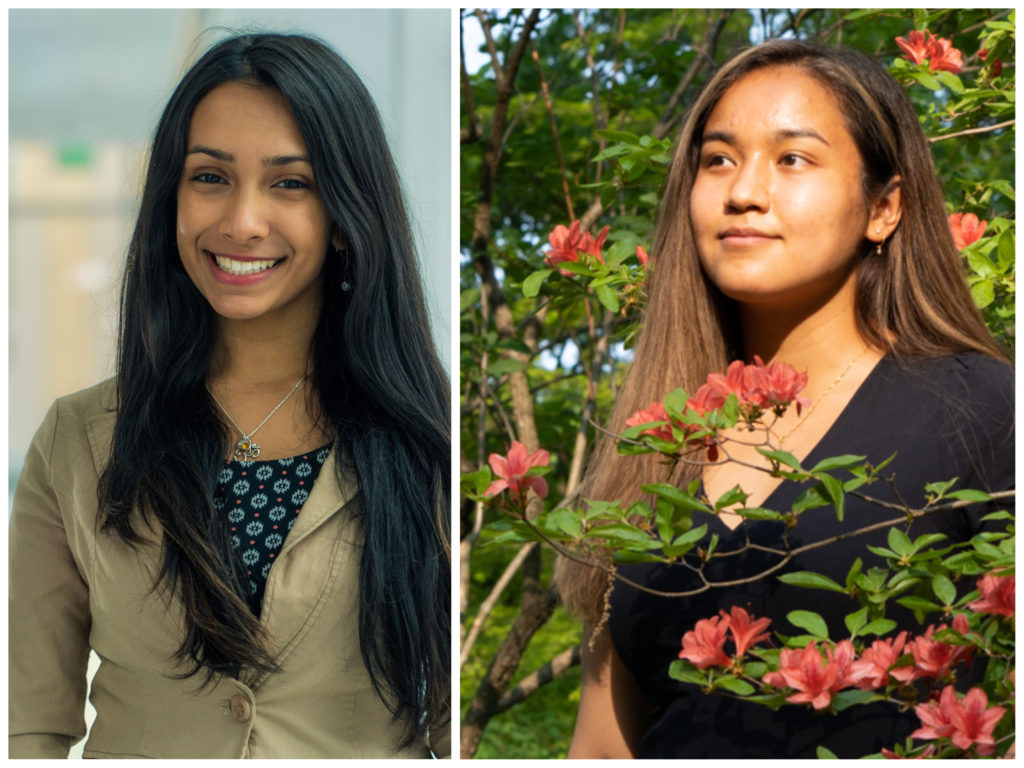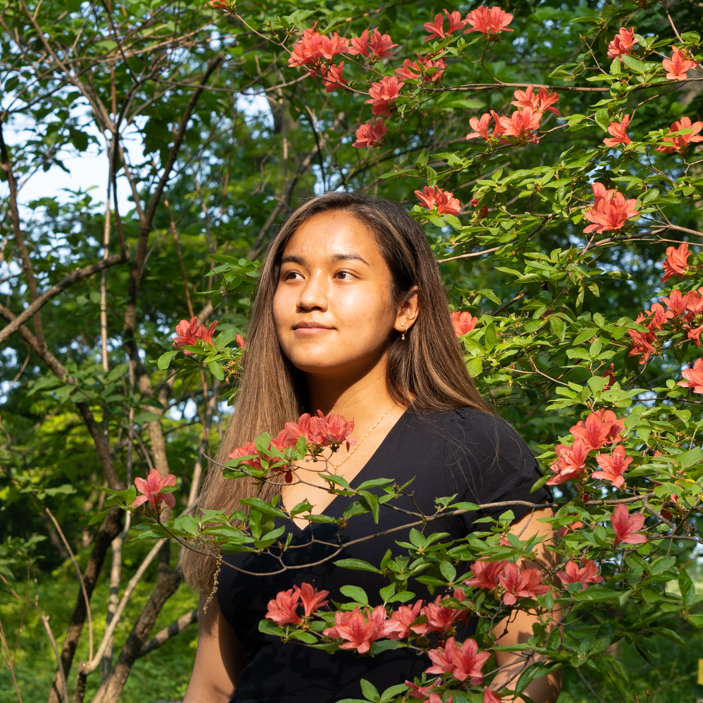3 Questions: Maaya Prasad and Kathleen Esfahany on Vision, Perception, and the Poetry of Science

If you’re a frequent commuter through Kendall Square or visitor to Mass General Hospital, you might soon notice an art exhibit featuring some familiar faces. The exhibit, called “The Poetry of Science”, pairs photographs of notable scientists, including MIT students and researchers, with poems about their research areas of interest. Two EECS students, Kathleen Esfahany and Suparnamaaya (Maaya) Prasad, were recently invited to participate in the program, which set a goal of increasing public awareness of women and people of color in science.
Kathleen Esfahany, a junior EECS and Brain and Cognitive Sciences major with research experience in computational neuroscience and artificial intelligence, has explored topics as varied as information processing in the visual cortex, and how dreams affect creativity. A first-generation Vietnamese-Iranian-American and President of the MIT Women in EECS organization, Esfahany advocates for the increased representation of women and other underrepresented groups in computer science. Her portrait was taken by photographer Vanessa Leroy in a sunny session in Harvard’s Arnold Arboretum.
Maaya Prasad, an EECS and Creative Writing double major, was tapped to write a poem about the image. The daughter of South Indian immigrants, Prasad traces her passion for storytelling back to her desire to maintain continuity in her family and culture across generations and emigrations.
We sat down with both of them to learn more.
How did you approach this poem—did you already have a rough outline for the ideas you wanted to communicate, or was this a result of a conversation or exploration between you?
Maaya: Basically, I didn’t have anything prepared! I really wanted to meet Kathleen, get to know what she’s interested in and use that conversation to spark ideas and takes. We had a long conversation where I took a lot of annotated notes and thought about what I could produce from her interests. After that I went aside, drafted the poem, sent it to Kathleen, got her thoughts, and pushed it into a final format from there.
Kathleen: As Maaya said, the poem emerged from a lengthy conversation between us, although I went in with a pretty good feel for what ideas I wanted to communicate. Even before embarking on this project, if you had asked me to imagine a poem combining the facets of my identity with my interests in science, I would have brought up visual perception as a central theme. If you read the poem, you will see it centers on a theme of visual perception and how each of us sees the world differently. Any neuroscientist can talk about how real individual differences in perception exist, due to biological differences in our visual systems. While I’ve introspected on the way my unique cultural heritage has affected how I view the world, it was new for me to have the opportunity to communicate this feeling. Working with Maaya was the first time I’ve ever discussed these topics with someone who wasn’t already a close friend. When I have conversations about my identity, my goal is that the person I’m talking to can really understand me, and Maaya did a truly amazing job asking questions, making me feel heard, and turning her understanding of my identity into a poem.

The portrait of Kathleen taken by photographer Vanessa Leroy is a crucial part of the piece—Kathleen, tell me a little about what you hope viewers will take away from the portrait, and how you both feel the portrait and poem “talk to each other”.
Kathleen: Vanessa was an absolute pleasure to work with. I admit I was a bit nervous since I had never participated in a photoshoot before, but Vanessa made the whole thing a relaxed and fun experience. We went to the Harvard Arboretum, located on the end of the Orange Line. I was amazed that even though all of Vanessa’s photos for the Poetry of Science were taken in the Arboretum, they all have a different energy that truly matches each scientist. In my case, Maaya included lots of colorful imagery and references red flowers. Vanessa managed to snap a great photo where I’m surrounded by some pinkish-reddish flowers — I think the poem and the portrait go well together.
Maaya: I wasn’t there for the photo shoot, but Kathleen and I discussed which outfit would be the most appropriate for the poem. Kathleeen is wearing a black dress, which makes the color of the green and pink scenery stand out. I think it really contrasted, in a good way.
The Poetry of Science pop-up gallery will be displayed in both Kendall Square and Mass General. Did the venues your work would be displayed in, and the audiences they would encounter there, affect your thinking about the piece?
Kathleen: We actually didn’t know where the installations would be while we were working on the poem, since the details were still being finalized. We did know that the poem would be read at a “lit crawl” during the Boston Book Festival in June 2021, so I knew that whatever I shared with Maaya would be made public. I wanted to make sure the poem accurately represented my identity and any scientific details. I also wanted to make sure the poem had a more positive angle, to inspire other girls and women of color who aspire to be neuroscientists.
Maaya: The premise of this project is “poets of color writing about scientists of color”, and it’s a great opportunity, not only to engage scientists in the humanities, but also to showcase some incredible scientists. I wanted to accurately represent who Kathleen is and what she’s working on in a way that could inspire a person to think about all the possibilities of this field, seeing more people and women who look like them, people whom they wouldn’t necessarily have imagined in this field. So I was thinking not only about how to engage Kathleen and make her comfortable and recognizable in the work, but also how to reach out and engage people who are seeing her on that level.
Media Inquiries
Journalists seeking information about EECS, or interviews with EECS faculty members, should email eecs-communications@mit.edu.
Please note: The EECS Communications Office only handles media inquiries related to MIT’s Department of Electrical Engineering & Computer Science. Please visit other school, department, laboratory, or center websites to locate their dedicated media-relations teams.